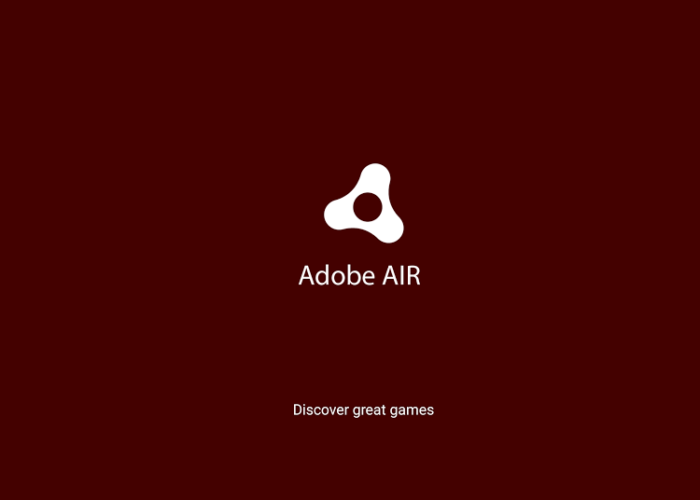
Official Adobe AIR Resourcesįor quick reference here is a brief overview of the essential official Adobe AIR resources that may come in handy for developers of AIR-applications.
#ADOBE GET AIR FOR MAC OS X#
The kits are available for Mac OS X (22.1 Mb), Windows (15.8 Mb) and Linux (18.5 Mb).
#ADOBE GET AIR INSTALL#
This development kit (will provide you with the framework for AIR APIs, a template for the Adobe AIR application install badge, the command-line Adobe AIR Debug Launcher and the command-line Adobe AIR Developer tool.

#ADOBE GET AIR SOFTWARE#
You will also need the Adobe AIR Software Development Kit (SDK) to develop, build and deploy Adobe AIR applications. To get you started, you will need the runtime environment for running AIR applications on your OS ( download the latest version of Adobe AIR – you will be asked for the OS you are using). In fact, Adobe AIR is becoming more and more popular with over 100 million installations of the engine across the globe and over 470 AIR-applications featured on Adobe AIR Market Place. The only requirement is that the users of AIR-applications have the AIR runtime engine installed (very much like Adobe Flash users need to have the Flash-plugin installed on their system). The resulting application is delivered to end users in a single package and rendered using the WebKit HTML engine. Hence, applications are created using a mixture of JavaScript, HTML, and Flash. In other words, Adobe Air makes it possible for web-developers to run rich Internet applcations outside the web browser (similar to Mozilla’s Prism) – on the desktop – and also guarantess cross-compatibility across operating systems. Or just something a little less intrusive than an annoying dialog box, one that pops up and bugs me all too often.To do so, the runtime complements the browser adding desktop integration, local data access, embedded database, convenient desktop APIs and a cross-operating system compatibility. I just wish Adobe would get their act together.

That’s okay, but what’s with the incessant updates? Is the program that much of a security risk? And, yes, the program displays Acrobat files, which is probably how it relies upon Adobe AIR. I use that program to keep the books for my business. On my PC, apparently the program that relies to death upon Adobe AIR is Intuit’s QuickBooks. Those programs would apparently suffer perilous demise as the absence of Adobe AIR. At that point, a warning dialog box appears and alerts you to which programs use the service. To find out which program it is, you must attempt to uninstall Adobe AIR.
#ADOBE GET AIR PC#
My translation: Some program I installed on the one PC uses Adobe AIR. Seriously? What in god-forsaken hell does all that mean? AIR allows developers to use familiar tools such as Adobe Dreamweaver®, Flash Builder®, Flash Catalyst®, Flash Professional, or any text editor to build their applications and easily deliver a single application installer that works across operating systems. Here’s the actual answer to the question, “What is Adobe AIR?”:Īdobe AIR is a cross-operating-system runtime that lets developers combine HTML, JavaScript, Adobe Flash® and Flex technologies, and ActionScript® to deploy rich Internet applications (RIAs) on a broad range of devices including desktop computers, netbooks, tablets, smartphones, and TVs. The Adobe website doesn’t answer any of my questions about Adobe AIR in its FAQ. So what the hell is Adobe AIR? How did it get on my PC in the first place? It’s not on every system, so it must be some specific piece of software that invited it aboard. Now the obvious answer is to uninstall Adobe AIR. It should read, “Please send Adobe AIR and all its programmers into a molten furnace in North Korea.” I’d click the hell out of that button. I think a third button should be available in the dialog box shown in Figure 2.


 0 kommentar(er)
0 kommentar(er)
